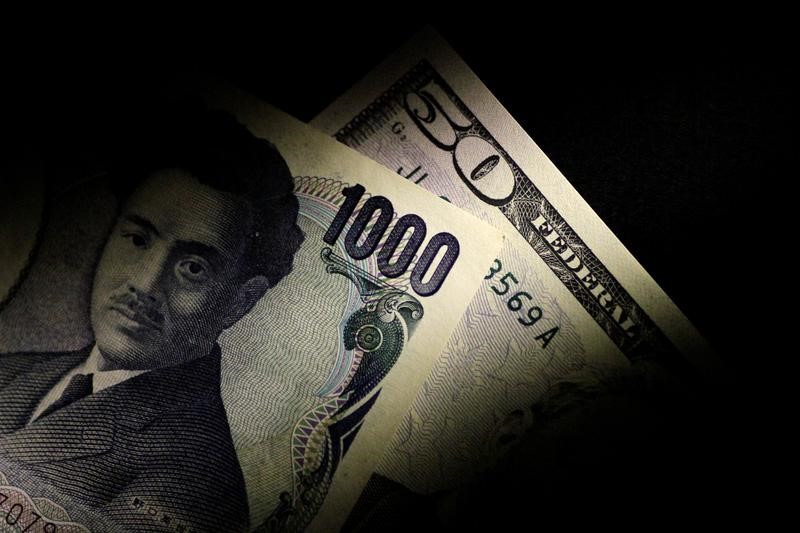 © Reuters.
© Reuters.
Investing.com - The U.S. dollar gained in European trade Tuesday ahead of the start of the latest Federal Reserve meeting, while the Japanese yen slumped despite the Bank of Japan ending its negative interest rate policy.
At 04:00 ET (09:00 GMT), the Dollar Index, which tracks the greenback against a basket of six other currencies, traded 0.4% higher at 103.640, not far off a two-week high hit earlier in the session.
Dollar in demand ahead of Fed meeting
The U.S. currency has seen demand Tuesday, climbing near to two-week highs after a recent run of resilient U.S. inflation data prompted traders to adjust expectations for the pace and scale of Federal Reserve rate cuts this year.
Fed officials get together later in the session Tuesday, ahead of Wednesday's policy announcement, which will be scrutinised for clues to how soon the central bank could start easing rates.
“With the market now just pricing 68bp of Fed cuts this year, the FOMC could prove a mild dollar negative,” said analysts at ING, in a note. “For the time being, however, the risk of the Fed Dots shifting to just 50bp of cuts this year could continue to prompt some modest dollar short covering.”
Yen slumps despite BOJ hike
USD/JPY traded 1% higher to 150.62, with the Japanese yen weakening sharply despite the Bank of Japan raising interest rates by 0.1%, bringing them to neutral territory after nearly a decade of negative rates.
The bank also signaled an end to its yield curve control and asset purchase policies.
However, the central bank also said that uncertainty over the Japanese economy will keep monetary conditions largely accommodative for the “time being.”
A pivot away from negative interest rates was widely expected, and it marks only a marginal move away from its ultra-dovish stance, meaning the Japanese currency remained under pressure.
“The problem for the yen,” said ING analysts, “is that volatility remains exceptionally low and the carry trade exceptionally popular.”
“USD/JPY may well trade in a 150-152 range for the time being … and a lower USD/JPY will have to be led from the dollar side.”
Euro drops to two-week lows
EUR/USD traded 0.3% lower to 1.0839, falling near to two-week lows on the back of dollar strength, even as German economic sentiment showed an improvement in March.
There is growing expectation that the European Central Bank will cut interest rates in early summer, with Vice President Luis de Guindos on Tuesday, joining a long list of policymakers putting the June 6 meeting on the table for a potential start of policy easing.
"We haven’t yet discussed anything about future rate moves," de Guindos told Greek newspaper Naftemporiki in an interview. "We need to gather more information. In June we will also have our new projections and we will be ready to discuss this."
GBP/USD traded 0.4% lower at 1.2674, also near a two-week low, ahead of Thursday’s Bank of England rate-setting meeting, which is widely expected to see unchanged forward guidance.
USD/CHF traded largely unchanged at 0.8878, with the Swiss National Bank also expected to keep interest rates unchanged on Thursday.
The SNB announced earlier Tuesday that it sold foreign currency worth 132.9 billion Swiss francs (around $150 billion) in 2023 in an attempt to combat imported inflation, a massive increase from the 22.3 billion francs in foreign currencies sold in 2022.
The SNB has said it would no longer focus on foreign currency sales.
Aussie dollar retreats after RBA meeting
Elsewhere, AUD/USD fell 0.7% to 0.6511 after the Reserve Bank of Australia kept interest rates steady, but struck a less hawkish tone than markets were expecting.
The RBA did not offer an explicit warning that interest rates could rise higher to combat sticky inflation, and instead offered largely vague cues on monetary policy remaining tight to offset high price pressures.

